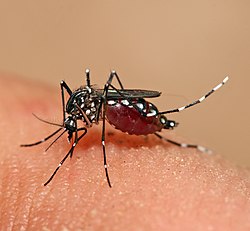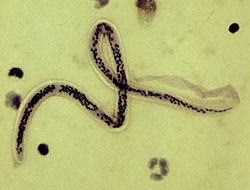This article is an orphan, as no other articles link to it . Please introduce links to this page from related articles . (October 2025) |

In epidemiology, vector incrimination refers to the process of proving that a particular species, a specific vector of disease, is responsible for the transmission of a pathogen to hosts. This study[ clarification needed ] is used in the identification and control of mosquito species as carriers of diseases such as malaria. [1]
In order to decide whether a species is responsible for the spread of a pathogen, a number of parameters must be examined. The abundance and presence of organisms within a species that are infected with a pathogen, the age and parity of a vector, and the feeding behaviours of the vector are some of these parameters. From here, professionals can calculate the biting rate, infectivity, vectorial capacity and inoculation rate of the vector. In mosquitoes, the condition of the abdomen and digestion can be used to determine how often they feed, and dissection of salivary glands can be used as detection for the presence of sporozoites of a pathogen. [1]

In a 2025 study, mosquitoes of the genera Aedes, Anopheles, Culex and Mansonia were incriminated as vectors of lymphatic filariasis, a tropical disease caused by Wuchereria bancrofti, Brugia malayi and Brugia timori . Mosquitoes were collected from areas within the range of the infection. The mosquitoes were then identified, segregated, and pooled. Using molecular tools, the specimens were tested for the presence of W. bancrofi. The studied resulted in Culex quinquefasciatus as the vector of the pathogen. [2]